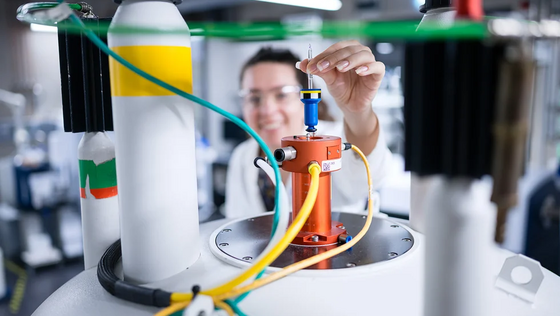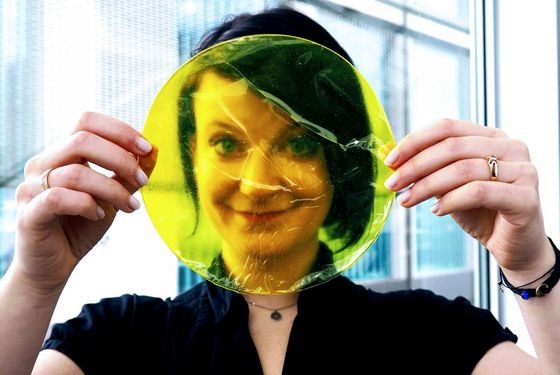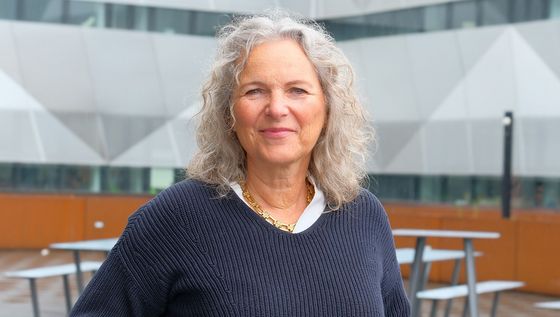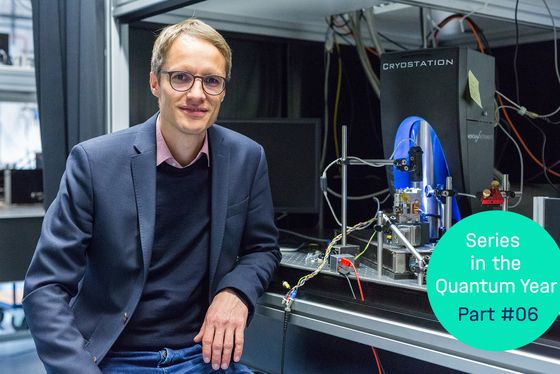|
||||||||
|
||||||||||||||||||||||||||||
|
|
The challenges of our time can only be solved with cutting-edge research. Thirty years ago, a loose association of large research institutions came together to form the Helmholtz Association with precisely this goal in mind. Through joint research programs that transcend the boundaries of individual research centers. We celebrated this anniversary in Berlin with more than 700 guests from the worlds of science, politics, and society. You can find impressions of this special evening here. Also: The UN Ocean Conference in Nice has shown that multilateral cooperation is still possible. In our position statement, Sylvia Sander of the GEOMAR Helmholtz Centre for Ocean Research emphasises the need for foresight and responsibility in future deep-sea activities. Enjoy reading! |
|
|
|
|||||||||||||||||||||||
|
|
|||||||||||||||||||||||
|
|
|
New, resistance-breaking drugs are urgently needed to effectively treat infections with antibiotic-resistant germs in the future. Researchers from Saarbrücken and Vienna have now found a possible starting point for the development of such drugs in the natural product Saarvienin A. This novel molecule is capable of killing bacteria even if they are already resistant to clinically used antibiotics. The researchers published their findings in the journal Angewandte Chemie International Edition. Glycopeptide antibiotics (GPAs) are microbe-derived active substances that are used as last resort treatment options for severe infections caused by multi-resistant pathogens. They are effective against a broad spectrum of Gram-positive pathogens, such as the notorious MRSA (methicillin-resistant Staphylococcus aureus), and are mainly used in hospitals. Saarvienin A belongs to a newly discovered family of GPAs and was isolated from the soil bacterium Amycolatopsis sp. YIM10, which originates from a Chinese rare earth mine. Bacteria of this genus are known as prolific producers of antibiotics, including other GPAs such as the clinically used vancomycin. At the beginning of the study, the researchers first observed that Saarvienin A-containing extracts of YIM10 strongly inhibited the growth of Gram-positive test bacteria. The active ingredient, whose name is derived from the cities where the two research teams are located, Saarbrücken and Vienna, even outperforms GPAs that are already available on the market. Compared to vancomycin, Saarvienin A shows up to eight times higher antimicrobial activity against MRSA. In addition to its excellent efficacy, Saarvienin A also stands out because it is capable of killing germs that are already resistant to other GPAs. This behavior suggests that Saarvienin A has a different mechanism of action as compared to other members of this class of antibiotics. In subsequent studies, the team aims to elucidate both the exact mechanism of action and biosynthesis of Saarvienin A and find ways to chemically improve this newly discovered class of natural products. Scientists discover first „Saar-drug“
Mental Knots – A Proteins Role in Schizophrenia Researchers at Forschungszentrum Jülich in Germany have published two new studies offering fresh insight into a protein believed to play a pivotal role in the development of chronic mental health conditions such as schizophrenia. The protein, known as DISC1, short for Disrupted in Schizophrenia 1 acts as a molecular scaffold in the healthy brain. It enables other proteins to perform essential tasks like cell division and neural development. But when its structure is compromised, DISC1 can no longer perform this key function with potentially serious consequences for the development of neurons or the nervous system. more “Shrinking” Cod: How Humans have altered the Genetic Make-Up of Fish Overfishing not only depletes fish stocks — it also alters the genetic blueprint of marine life. In the central Baltic Sea, cod (Gadus morhua) have not only become scarcer, but also significantly smaller than in the past. Researchers at the GEOMAR Helmholtz Centre for Ocean Research Kiel have now shown for the first time that Eastern Baltic cod grow markedly more slowly than they once did, and that this change is reflected in their genome. Intensive fishing pressure triggers genetic responses in overexploited stocks, with long-term implications for their future development. more |
|
The most exciting aspect of being a scientist is the constant unknown. Is the next breakthrough just around the corner? What exciting new project will come up? What new topic will I explore next? What inspiring people will I get to work with? What new administrative challenge will I have to face today? Learning something new all the time keeps me on my toes.
I’m very fortunate and can work on all the projects that I’m passionate about. We’re developing cardiovascular implants using active polymers and sensors to help with strokes and bring a new dimension to minimally invasive therapies. With unlimited resources, I would hire an even bigger team of excellent scientists and clinicians to move this project forward as quickly as possible and get it through animal and clinical trials. In the end, we would be able to offer patients new implants to help them recover.
I would have dinner with Neil deGrasse Tyson and talk about the probability of humans actually living in a giant simulation, and about the origin of the universe. |
|
|
|
The deep sea is the largest habitat on our planet, yet also the least explored. Below 200 meters, a world that makes up 90% of the ocean’s overall volume begins. This world is home to a multitude of unknown species and unique ecosystems that play essential roles in the global climate and human health. Despite its importance, the deep sea remains understudied by scientists and underrepresented politically. This has to change. 2025 is a pivotal year. The BBNJ Agreement (the UN Agreement on Biodiversity in Areas Beyond National Jurisdiction) has established a legal framework that must now be actively implemented. Science and politics must work together here – nationally, Europe-wide, and globally. The European Marine Board (EMB), a thinktank that brings together leading marine research institutes and other stakeholders, recently published a Future Science Brief showing how urgently we need to close our knowledge gaps about the deep sea. Based on a thorough review of current research shortcomings, the brief includes ten recommendations for policy, science, and international cooperation. Key points include establishing long-term monitoring programs in sensitive regions, developing standardized environmental impact assessments for future deep-sea activities, and creating an independent international scientific committee for protecting the deep sea. Other recommendations include investing in critical research areas, such as the role of the biological carbon pump, meridional overturning circulation, and the effects of human influences on deep-sea organisms, as well as building global capacity, e.g. through technology transfer and FAIR data standards. For Germany and Europe, this means setting clear political priorities and making strategic investments in research, technology, education, and international cooperation. The Helmholtz Association, with its exceptional expertise in the Earth and Environment research field, can take the lead. We must remember that the deep sea is valuable not only for its resources, but also as a habitat in its own right and as an integral part of the global ecological balance. As such, protecting it isn’t contradictory to using marine resources; it’s a prerequisite for doing so. We must take the “One Ocean” principle seriously: coasts, the high sea and deep sea are all connected, even across national borders. The deep sea isn’t some remote place. Its health affects our climate, our food, and our future. Exploring it is an investment in ecological, economic and ethical resilience. Dive in? Yes! But please do so with depth, foresight, and responsibility. |
|
|
|
|
Quantum mechanics not only gives us a deeper understanding of what happens in the microcosm, but also offers us a range of extraordinary applications: from quantum materials with unusual properties such as topological insulators, to quantum computers and quantum communication. In the last part of our series on the quantum year, we want to shed light on the latter. We spoke with physicist David Hunger from the Karlsruhe Institute of Technology about a type of communication that cannot be eavesdropped on unnoticed thanks to quantum particles. |
|
Published by: Helmholtz Association of German Research Centres, Anna-Louisa-Karsch-Str.2, 10178 Berlin Editors: Sebastian Grote, Franziska Roeder, Martin Trinkaus Photo credit: Phil Dera (Editorial) No subscription yet? Click here to register If you no longer wish to receive our newsletter, simply click here: Unsubscribe © Helmholtz
|
![[Translate to Englisch:] [Translate to Englisch:]](https://www.helmholtz.de/assets/helmholtz_gemeinschaft/_processed_/f/b/csm_martin_trinkaus_neu_0597261073.jpg)



